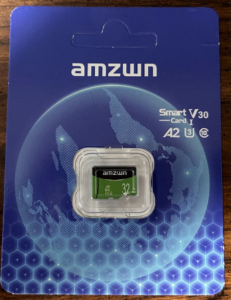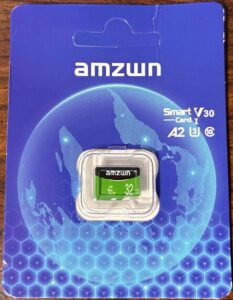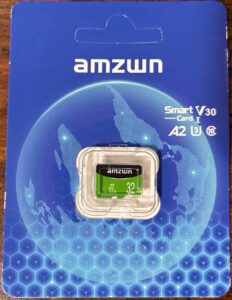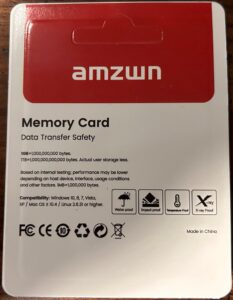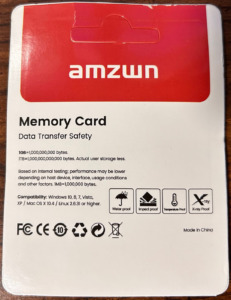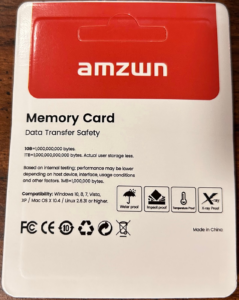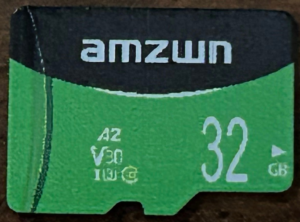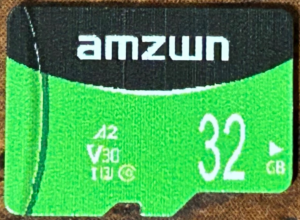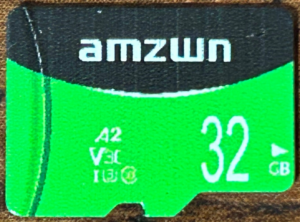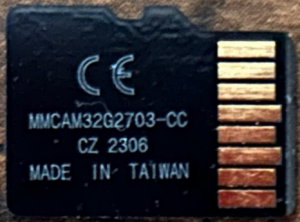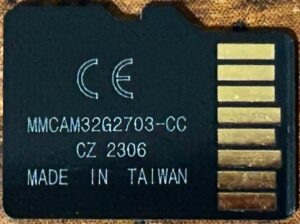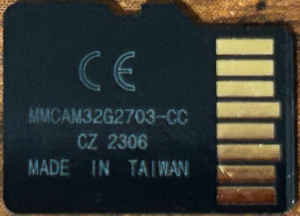- Obtained from: AliExpress
- Price paid: $4.92
- Advertised capacity: 32GB
- Logical capacity: 31,954,305,024 bytes
- Physical capacity: 31,954,305,024 bytes
- Fake/skimpy flash: Skimpy (0.14% skimp)
- Protected area: 83,886,080 bytes
- Adjusted skimp: -0.12%
- Speed class markings: Class 10, U3, A2
- CID data:
- Manufacturer ID:
0x9f - OEM ID:
0x5449(ASCII:TI) - Product name:
0x3030303030(ASCII:00000) - Product revision:
0x00
- Manufacturer ID:
Discussion
Amzwn is a brand that appeared pretty frequently while I was browsing AliExpress — both when searching for microSD cards, and as recommendations on other products. They appear to come in various sizes, ranging from 32GB to 256GB. At least one version of their card (not this one) is labeled as “Amzwn basics”, with an arrow similar to the “A to Z” arrow used in Amazon’s logo appearing underneath the name. Combined with the similarity to Amazon’s name, this strongly suggests that they are hoping buyers will confuse them with Amazon.
Overall, I wasn’t terribly impressed with these cards. Read/write speeds were well below average — its best single score put it in the 25th percentile. No scores were high enough to warrant any of the speed class marks that it bears, with the exception of the Class 10 mark.
On the endurance front:
- Sample #1’s first error was a data verification failure affecting two sectors during round 1,536. It has survived 2,262 read/write cycles in total so far.
Sample #2 almost made it to the 2,000 read/write cycle mark without errors — but then it started failing, and hard. Its first error was a series of bit flip errors during round 1,988; by the end of round 1,989, those errors had affected over 1% of the total sectors on the device, and by the end of round 1,990, it had affected every sector. Here’s what the progression looked like:
Sample #3 experienced its first error early on, but that error was pretty minor — only affecting four sectors. It continued to experience sporadic errors over the next several hundred rounds, but again, those errors were relatively small — only affecting 56 sectors total over 1,720 read/write cycles. During round 1,721, however, it started experiencing a large number of bit flip errors. During round 1,722, those errors must have begun to affect the storage area that the card uses for the CSD data — because it suddenly began reporting itself as being 2TB in size. At that point I decided to declare the card dead. Here’s what this card’s progression looked like:
Overall, these cards were poor performers. On the bright side, they’re not fake flash; and while they were skimpy, they were definitely not the worst offenders. But would I buy them? Nah — there are WAY better options out there.
June 15, 2024 (current number of read/write cycles is updated automatically every hour)


